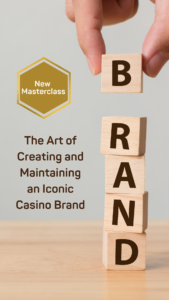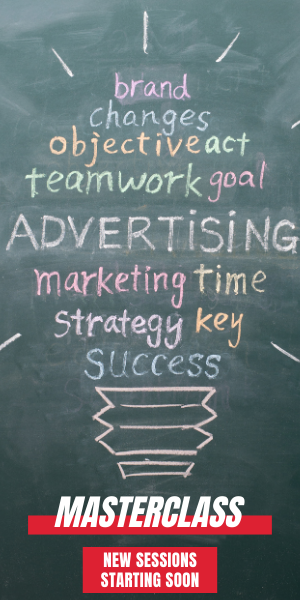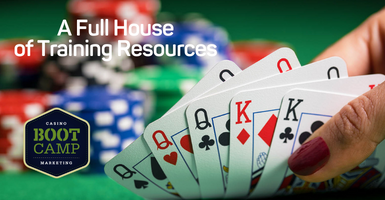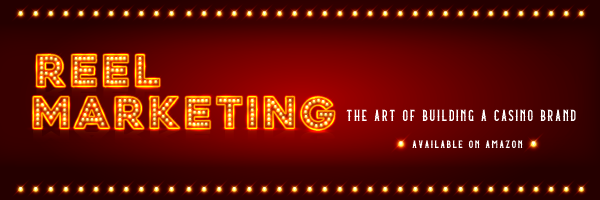Look around at the brands that have stood the test of time. If you look closely, you will see that successful ones have found a way to adapt to the modern world – whether that be digital applications of their identities, adapting to changing consumer lifestyles and needs, or finding better ways to build a mousetrap.
The Covid-19 pandemic, however, took the marketer’s playbook, shredded it, and set it on fire. Two years later, there is no going back to the old ways. According to the Bynder State of Branding Report, there were five key takeaways from 2020 to consider as we move forward.
- Not everyone ventured so heavily into digital initiatives and transformation in 2020, but those who did saw a dramatic increase in content, data, and tech. 59% of marketers reported that the most sizable impact from digital initiatives was generating more digital content and creative output.
- The demand for content never showed any signs of slowing, even during the otherwise wild and unpredictable year that 2020 was. Campaigns and content increased by 41% YoY!
- Marketers may be overestimating their ability to keep up with content demands: 72% of marketers feel confident they are on track to keep up with creative and content requests this year, but 73% of marketers admitted they created significantly less content than they originally planned to in 2020.
- Marketers have a new view of automation. In 2020, 23% said branding could not be automated – even portions. In 2021, only 1% of marketers said the same, suggesting a shift in acceptance towards bringing automation to all parts of marketing — including branding and creative.
50% or more of respondence are implementing new digital experience tech, investing in data and analytics, and generating more content (be it social posts, ads, or mailers).
It is past time to look at our brands and understand how prepared they are for this new normal and the next one.
The Usual Suspect: The Logo
Most of us will naturally gravitate to a review of the logos surrounding us.
Historic identities still viable today will have invariably found a way to integrate the equity earned from their original logos with the visuals that dominate our lives today. In some cases, this has been a thoughtful, well-crafted evolution. For some, it has been in response to the current communications landscape that requires our brand identities to live in various digital (and small) mediums. And sometimes, the modernization of a logo has been a direct result of simple design tools that have allowed designers to create logos with true stopping power. Regardless of the love you have for your logo, its life will always be informed by the day’s norms, trends, and standards.
A Makeover, Not Plastic Surgery
In some cases, your logo might be ready for just a tiny bit of help – a refresh. A logo refresh is like a personal makeover that transforms how a person, or brand, is perceived. The foundation (much like your bone structure) does not change, but the new clothes and makeup are updated and designed for today. No logo can stay relevant forever if it does not keep up with changing customer sensibilities.
Ask yourself a few questions:
- When was the last time your logos were refreshed? Are they showing signs of aging? Hello, italics! Hello, bubble letters!
- Is your logo too complex for today’s digital channels?
- Is your company evolving? Are your customers evolving? Given the last two years, the answers to these are probably a resounding “yes.”
If any of your answers have you looking at your logos with a new eye, there are a few basic approaches to modernizing your logo, which can be relatively pain-free…if not committee-free.
- Keep the logo but update the tone to match a strategy.
- Add messages (such as taglines) and re-evaluate a hierarchy of graphic elements.
- Freshen or expand the color palette
- Simplify or remove complex elements (particularly those that cannot translate on digital platforms).
When Waste Management updated its identity with the color green, it focused on becoming a green, responsible company and started communicating the proof of its environmental efforts.
The Miami Dolphins have updated their logo over the years while still honoring the legacy and equities of the brand. There is still a dolphin (though admittedly a less “goofy” version) and the warm Miami sun. The palette is the same but brightened a bit. More importantly, a simplified design gives them better usage in digital and video. The evolution of the mark has focused on what continues to be essential and what can be thrown away.
As marketers, we have all seen cases where logo updates or changes have been received with negative feedback. You should anticipate some level of negativity. Prepare your executive team and find an agreement in which audiences (and opinions) truly matter to your brand. And if possible, do a little research before you roll out a new look to a beloved brand mark. Otherwise, like Gap, you may reverse your decision with no real rationale. A strategy must drive any changes.
Modernizing Your Brand is More than a Logo Discussion.
In 2018, Dunkin’ Donuts announced they were taking their brand in a fresher, new direction. They were not announcing a rebrand but more of a modernization of the brand. While they recognized the brand’s overall feel needed a bit of a jolt, they left the iconic logo untouched.
Instead, they looked to physical assets – signs, cups, and packaging – as canvases to create playful expressions of the brand. If you look at the history of the brand’s iconography, you will see that it has not changed much over the many years. The font was introduced in the 1970s, followed by the pink and orange colors in the 80s. A coffee cup was added in 2002, and its famous tagline has been in use since 2006. Additional modernization of the brand touches the experience – updating the look of the stores and emphasizing digital ordering.
 Beyond the Splash
Beyond the Splash
As marketers, we often look on with desire as other brands introduce splashy new approaches, but like most change, we must look internally to understand the root of the challenge. Believe me when I say that in 2022, it is not a logo problem. First, we need to examine what we are doing FOR the brand rather than what the brand is doing for our company. Savvy marketers realize that logos are only the tip of the iceberg. The most successful brand updates are those that have fundamental changes. The best signal of the shift is a refreshed logo, but those changes – logo and experience – must happen together.
Instead of asking the easy questions – are our brands lagging because of ineffective marketing tactics, or are we not advertising enough, we must ask the questions that address the brand’s equity rather than awareness. The fact is that customers probably already know about you. The more challenging but more strategic questions are about demand.
- Is the message you are sending out speaking to customers’ priorities?
- Is your product satisfying the needs and desires of your target customers?
Your resources are much better spent on understanding what the customer wants. Only when you understand this can you make the necessary operational changes and THEN proceed to more effective communications tactics.
Around the year 2000, Special K disrupted the cereal market. Initially introduced in the 1950s, Special K had benefited from a strong association with weight loss since the 1980s. Unfortunately, the cereal was described as bland, and there was no real innovation. Towards the late 90s, Special K began understanding consumer priorities by asking consumer-focused questions.
- Does our consumer believe what we say about weight loss?
- How should we deliver our promise to our consumers?
- What makes consumers think about our brand?
- What benefit is our consumer seeking?
The result was a powerful connection with their specific target market of women, 25-45. Asking demand-oriented questions allowed them to understand that consumers were looking for easy solutions to their dieting needs. The framing of their “2-week Challenge” and innovation in flavors and product extensions led to increased market share and modernization of their brand that was not focused on the logo.
That same year, the casino company, then operating as Harrah’s, underwent a significant shift in how it approached marketing communications. With over 20 properties carrying the Harrah’s banner, the company had a national image campaign mixed with countless advertising themes running in the various local markets. There was not a clear message. Starting with input from focus groups around the country, the brand team developed positioning and concepts. Then, they tested again, further identifying execution elements such as voiceover styles, age of talent, and music. Establishing the overall brand positioning started in August of 2000 and eventually launched at the national and local levels in March of 2001. The new brand leveraged the emotions associated with playing slots at Harrah’s, uncovered during the research phase – why visits to Harrah’s mattered to customers. Although the brand positioning resulted in a library of new creative elements, it did not lead to a logo change but rather a consistent mark application.
When the former Isle of Capri Casinos added a new brand to its portfolio in 2007, some expected it to change the face of the company. The challenge was that not much else was changing. A new management team put the brakes on the “rebranding” to align the company objectives to a defined strategy – matching asset class, market growth, and competition to the brand. The result was a bifurcated challenger brand strategy focused on experience or value but always based on the fun: Isle and Lady Luck. It was only then that we started changing logos.
The Impact of COVID on Our Brands
The last two years have impacted our brands more than any economic or technological shift, but we also learned valuable lessons.
- It used to be that you had to know your customer. The pandemic-related shifts showed many marketers what casino marketers already knew: you must know your customer segment. Communications need to be personally relevant and aligned with an individual’s situation and values, rather than tailored to demographics or geography,
- For casino marketers, the competition used to be other casinos. Today, we compete against a customer’s last experience, which could be anything. Did they get in their cars, drive to the local supermarket and shop for groceries, or did they order what they need and pay for it all in the palm of their hand. Suddenly the expectation of a satisfying experience includes something very quick or friction-free. DTC brands are leveraging every bit of data and have gotten customers used to hyper-personalization. So, imagine a customer of yours getting an offer of no interest to them or, worse, standing in line to redeem that offer.
- Before COVID, customers may have hoped you had what they wanted. The frictionless sourcing of almost any good or service means customers expect you to have what they want and when they want it. This can alter your amenities and the games you maintain on your floor.

- Marketing, as our creative director says, is like dating. For the longest time, advertising was about buying mass reach media at the best rates to deliver the best message and convert. In dating terms, it was like going to as many parties and bars as you could in the hopes of finding that special someone. New media allows you to swipe through options until you find a prospective match. It is less about serendipity and more about algorithms. In marketing terms, we have changed our approach from brand marketing to build reach to performance marketing to generate leads. The acceleration of digital channels only quickened that trend. However, all is not lost to brand marketers as leading CMOS realize there must be a balance between brand and performance. We must be cautious not to fall under the spell of quantifiable data entirely. Many are bridging the gap between their database and advertising teams so that both can see the entire continuum of communication and outreach to customers. Simply put, they work better when they work together.
- Consider them as the center of the customer’s journey rather than thinking of the customer as sitting at the center of your marketing strategy. Marketing is typically just the start of the trip. Moreover, the various departments interacting with customers can often be siloed because of org charts, technologies, or geography. While it is nearly impossible for the entire customer journey to live in one department, marketing should be operated in the context of the whole end-to-end journey and, where possible, connect the silos.
- Brands must stand behind products AND values. Key findings from the EY Future Consumer Index show that while quality, convenience, and price are still important to consumers, new factors such as trust, ethical sourcing, sustainability, and social responsibility are gaining importance in how consumers choose a product or service.
“The pandemic has definitely reshaped marketing. You have to shift from thinking about billboards and huge events to more distributed digital content that’s bite-sized and can be put on multiple channels and that elevates your brand and builds trust. You’re competing for attention right now.”
Sarah Franklin, President and Chief Marketing Officer, Salesforce
Vision is a Double-Edged Sword.
The brand vision is at the beginning of any brand project. It is the heritage and foundation on which you build. Mature brands, however, can often become so rooted in their vision that it becomes difficult to adapt and change with the market. But you do not need to choose between tradition and change. The key is balancing the two. You must align your brand vision with consumer shifts to remain relevant to your customer.
Has your brand become indistinguishable from the competition TO YOUR CUSTOMERS (rather than in your opinion)? Has it taken the wrong role in the eyes of your customers?
Is there a disconnect between what the identity and experiences are saying today compared to when you originated the brand?
These are the questions that must be continuously asked and answered to maintain a relevant, valuable brand that has growth in its future.




Recent Comments